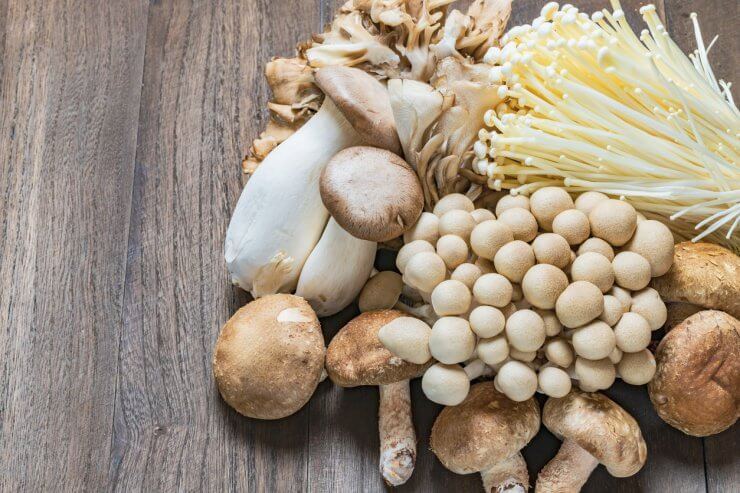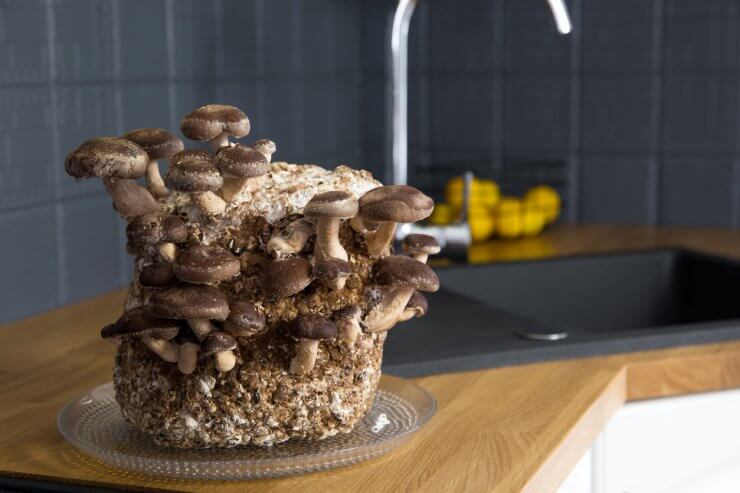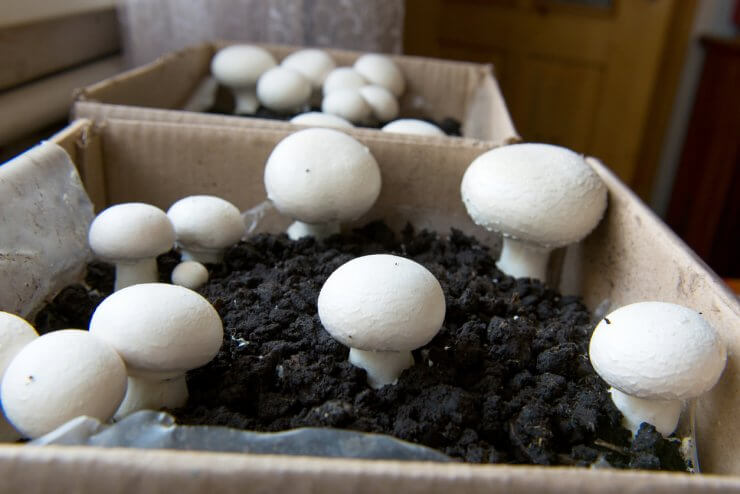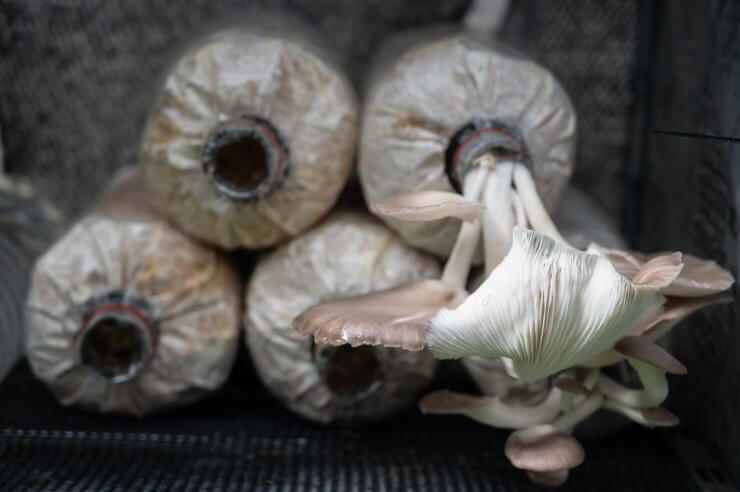
Assorted Mushrooms
Here are some key considerations when selecting mushroom varieties:
- Culinary Preferences: If your main goal is to enjoy mushrooms in your favorite recipes, consider varieties known for their unique flavors and textures. Shiitake mushrooms offer a rich, umami taste perfect for sautés and soups. Oyster mushrooms provide a delicate, slightly sweet flavor, making them versatile for stir-fries and pastas. For a meaty texture, consider King Oyster mushrooms.
- Growing Conditions: Mushroom species vary in their preferred growing environments. Choose varieties that suit your local climate or indoor setup. For cooler environments, varieties like Lion’s Mane and Enoki thrive. In warmer conditions, Reishi and certain strains of Oyster mushrooms are ideal.
- Disease Resistance: To ensure a healthy mushroom crop, opt for varieties with natural resistance to common fungal pests and contamination. Oyster mushrooms are known for their vigorous growth and resilience, making them a great choice for beginners.
- Harvesting Needs: Consider how you plan to harvest your mushrooms. Some species, like Oyster and Shiitake, offer multiple flushes of harvests over time. Others, such as Morels, may provide a single seasonal harvest but are highly prized for their unique flavor.
- Garden Harmony: If you’re incorporating mushrooms into a permaculture setup or garden, select species that complement your existing plants. Mushrooms like Wine Cap (Stropharia rugosoannulata) thrive in garden beds, helping improve soil health and nutrient cycling.
- Visual Appeal: For those who appreciate the aesthetics of their garden or indoor grow space, consider the appearance of different mushroom species. Brightly colored varieties like Golden Oyster or Pink Oyster mushrooms add a vibrant touch, while the cascading white spines of Lion’s Mane offer a striking visual contrast.
Explore our Mushroom Profiles section to discover the varieties that best match your gardening and culinary goals. Whether you’re aiming for gourmet excellence, sustainable gardening, or visual appeal, there’s a mushroom variety perfectly suited for your needs.
Share your plans for your mushroom garden in the comments below. We’d love to hear about the varieties you choose and how you plan to enjoy the abundance of your harvest!
Growing Mushrooms from Spores, Mycelium, or Kits

Shiitake mushrooms growing kit in home
Growing mushrooms is a rewarding endeavor that allows you to enjoy fresh, nutrient-packed fungi straight from your garden or indoor growing space. Whether you prefer to grow mushrooms from spores, mycelium, or grow kits, each method offers its own benefits and requires specific considerations.
Growing Mushrooms from Spores
- Inoculation Time: Start mushroom spores in a sterile environment, typically indoors, where you can control temperature and humidity. Most mushrooms thrive in cool, dark conditions.
- Spore Preparation: Obtain high-quality spore prints or syringes. Inoculate sterilized substrates like grain, sawdust, or straw with the spores under sterile conditions.
- Incubation: Keep the inoculated substrate in a warm, dark area (65-75°F) for several weeks until the mycelium colonizes the material.
- Growing Tips: Once colonization is complete, move the substrate to fruiting conditions with higher humidity, fresh air, and indirect light to encourage mushroom growth.
Growing Mushrooms from Mycelium (Spawn)

Growing mushrooms from mycelium in a cardboard box
- Sourcing Mycelium: Purchase ready-to-use mushroom spawn from reputable suppliers. Spawn is essentially mycelium that has already colonized a substrate.
- Substrate Preparation: Choose a suitable substrate based on the mushroom species (e.g., hardwood for Shiitake, straw for Oyster mushrooms). Pasteurize or sterilize the substrate before inoculation.
- Inoculation: Mix the spawn thoroughly with the prepared substrate, then place it in bags, containers, or logs depending on the cultivation method.
- Fruiting: Maintain proper humidity, temperature, and light to trigger mushroom fruiting. Regular misting and good airflow help optimize yields.
Growing Mushrooms from Kits

Oyster mushroom growing from grow kits
- Purchasing Kits: Mushroom grow kits are beginner-friendly options that come pre-inoculated with mycelium and ready to fruit. Choose kits based on the mushroom variety you want to grow.
- Setting Up: Follow the kit instructions, which typically involve placing the kit in a humid, well-ventilated area with indirect light.
- Care: Mist the kit daily to maintain humidity. Mushrooms usually begin to fruit within 1-2 weeks.
No matter which method you choose, ensure your mushrooms receive the appropriate conditions for their specific species, including the right humidity, fresh air, and appropriate light levels. Share your experiences with growing mushrooms using spores, mycelium, or kits in the comments below, and let us know your favorite methods for cultivating these fascinating fungi!


 Previous
Previous

